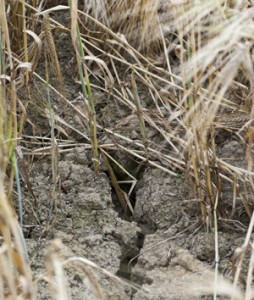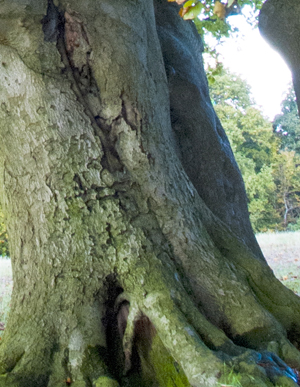The effects of drought – go on and on.

With the recent spell of fine weather, some people may have wandered down memory lane and recalled “the summer of 76”. Then, the temperature reached 80oF from June 22nd through to the 16th July, and for two weeks the temperatures in some areas exceeded 90oF.
However, temperature was not the only environmental factor to stress plants – lack of rainfall or drought was also a major factor. The previous autumn had been quite dry, as was the winter of 1975–76. The drought became most severe during the summer months - with woodland, forest and heath fires breaking out. Crop production was also severely affected, and there was water rationing (and stand pipes) in some areas.
Ecologists* from the University of Stirling (Professor Alistair Jump) and the JNCC have recently investigated the (long term) effects of the 1976 drought on native woodland. They examined the records of Lady Park Wood in the Wye Valley. This 45 hectare Nature Reserve was ideal for a detailed study as there existed long term records / surveys of the (unmanaged) woodland going back some 70 years. These surveys / records were coupled with growth ring analysis (for oak and beech).
 Their studies revealed that the ‘great drought of 76’ caused significant changes in the wood that are still ongoing. Prior to 1976, the dominant species in the woodland was beech but that long hot summer killed many of the beech (nearly 1/5th, between the drought and 1992), and has suppressed the growth of the beech trees that survived. This has tipped the balance in favour of sessile oaks, which are more drought tolerant. These effects are still measurable today; oak is growing better and there is more oak relative to beech than in 1976. Even the healthiest beech trees never quite recovered from this severe drought - their growth rate eventually stabilised at 75% of pre-drought levels. Thus, a relatively short term environmental perturbation can have quite dramatic and long term effects on a woodland / forest.
Their studies revealed that the ‘great drought of 76’ caused significant changes in the wood that are still ongoing. Prior to 1976, the dominant species in the woodland was beech but that long hot summer killed many of the beech (nearly 1/5th, between the drought and 1992), and has suppressed the growth of the beech trees that survived. This has tipped the balance in favour of sessile oaks, which are more drought tolerant. These effects are still measurable today; oak is growing better and there is more oak relative to beech than in 1976. Even the healthiest beech trees never quite recovered from this severe drought - their growth rate eventually stabilised at 75% of pre-drought levels. Thus, a relatively short term environmental perturbation can have quite dramatic and long term effects on a woodland / forest.
This study has implications for commercial forestry – single species systems are likely to be less resilient to environmental change than those with several or many species. Given that extreme events (wind, rain, cold, drought etc) seem to be increasing in frequency (as a result of climate change?), it would be as well to ‘build in’ resilience and resource stability by promoting diversity in woodlands and forests.
Further details can be found in their* paper in Functional Ecology
.
Comments are closed for this post.

[…] Articles on woodland activities, flora and fauna, conservation and other woodlandy topics. […]
The effects of drought – go on and on. | ...
4 September, 2013